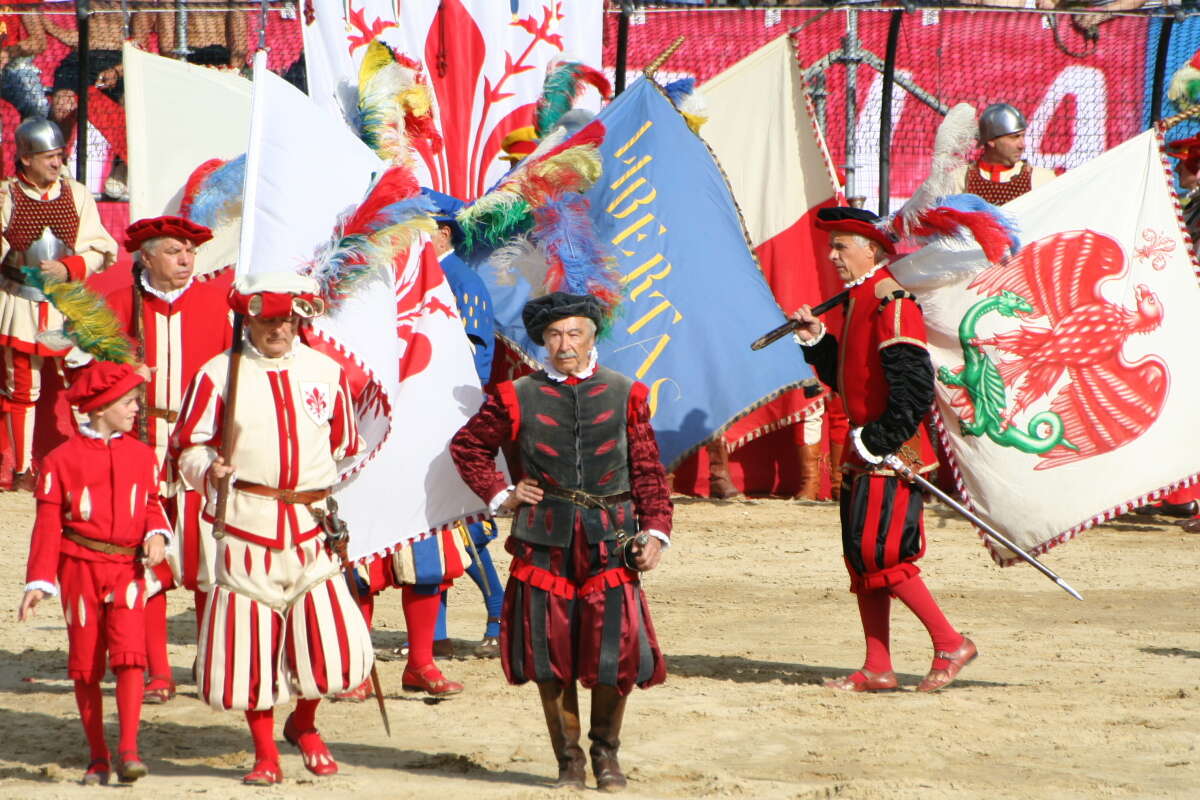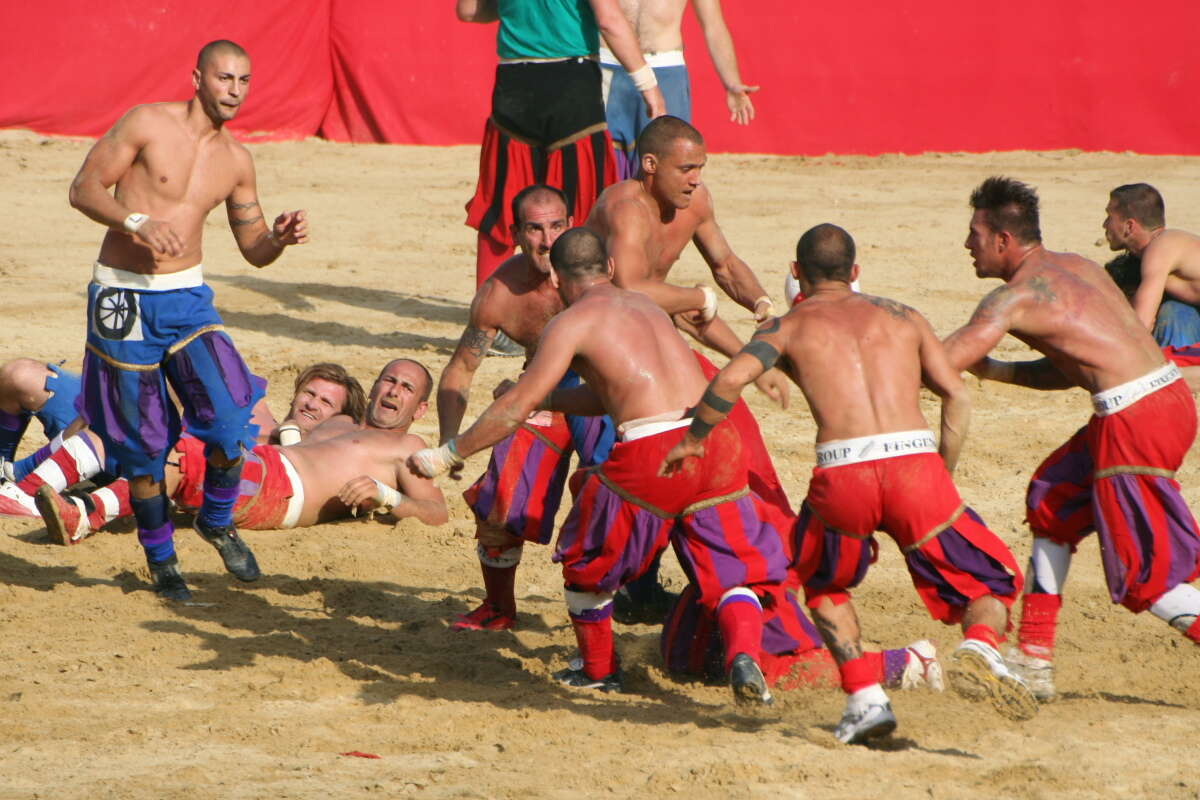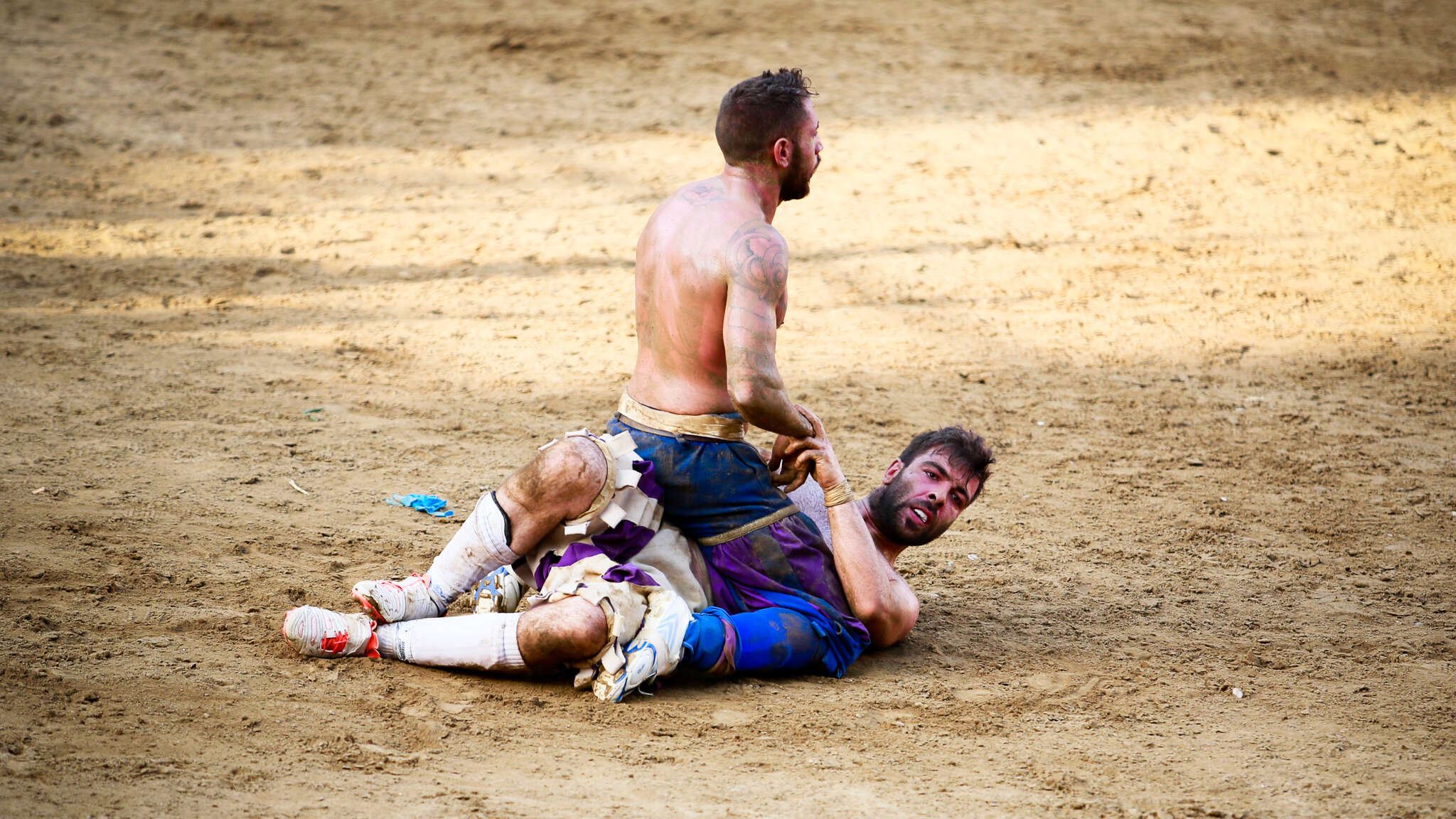Calcio Fiorentino
The ancient soccer
Calcio Fiorentino is an early form of football that originated in 16th-century Italy. Once widely played, the sport is thought to have originated in the Piazza Santa Croce in Florence. Here it became known as the giuoco del calcio fiorentino ("Florentine kick game") or simply calcio, which is now also the name for association football in the Italian language. The game may have started as a revival of the Roman sport of harpastum.
The term calcio was first used by the Italian poet Girolamo Macchiavelli in 1519. This very antecedent of football was already extremely popular in the cities of Pisa and Genoa. It was also widely spread in places like Florence and Naples, where political tensions were high and rivalries between different factions ran deep.
The rules
The official rules of calcio were published for the first time in 1580 by Giovanni de' Bardi, a Florentine count. The game is played on a field of sand with a narrow slit constituting the goal, running the width of each end. Each team comprises 27 players who are allowed to use both feet and hands to score goals.
There is some debate over the exact rules during this period. Some historians claim that two teams attempted to score by getting a ball into a net; others maintain that one team tried to score by kicking the ball into a goal-post whilst the other team tried to stop them.
The ban on calcio
Matches were often violent. Players could punch, shoulder charge, and kick opponents.
In 1580 Florence issued a ban on calcio, forbidding it under the penalty of death. This was not the first time the city had tried to get rid of the sport, but it was certainly the most successful. However, the sport did not completely disappear. Instead, it was held in secret and became the subject of much storytelling and folklore.
Calcio nowadays
A few small towns in Tuscany still play calcio fiorentino on special occasions like June 24, St John's Day and New Year's Day. It looks much like its 16th-century ancestor, with teams of 27 players trying to get a ball into opposing goals from a central starting point at either end of a large field. Nevertheless, there are some differences.












